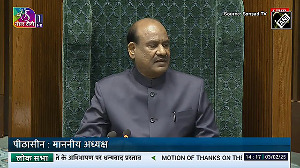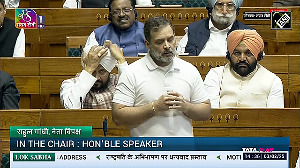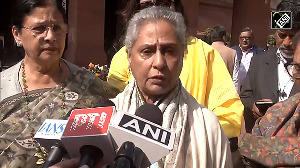In its semi-annual world economic outlook, IMF said adequate steps had not been taken to ease labour market rigidities, address trade liberalisation and capital account convertibility since the Union Budget for 2005-06 proposed only 'modest' structural reforms.
During the year under review, the GDP growth in India has slowed modestly, but is expected to remain robust, with the impact of uneven monsoon and higher oil prices being offset by buoyant industrial activity and strong investments, IMF said.
However, it said with the general government deficit of close to 10 per cent of GDP, "Fiscal consolidation remains a key challenge, more so given the ambitious social agenda set out in the new government's common minimum programme, which could ultimately raise expenditure by 10 per cent of GDP."
"Beyond the medium-term risks to macro-stability and the constraints that the deficit places on pick-up in investments, it (high consolidated fiscal deficit) "may also constrain progress on structural reforms, notably in the financial sector," it said.
Noting that the recent fiscal responsibility legislation provided a good medium-term framework, IMF said it needs to be fully implemented as the proposed deficit reduction in 2005-06 fell below the minimum annual adjustments mandated in the legislation.
Elaborating on steps needed to be taken by India, IMF said it is imperative to strengthen the state government finances since they account for 50 per cent of the country's overall deficit.
It also said the strong economic environment provided an important opportunity to improve the business climate - a key step towards increasing private sector participation mainly in infrastructure.
The opportunities include addressing the labour market rigidities and agricultural reforms, which are critical for poverty reduction, furthering trade and capital liberalisation and strengthening the financial sector, "which remains exposed to interest rate risk given its large holdings of government securities," it said.
On the price level in the country, IMF said "inflation seems now to be moderating."
In response to a sharp rise in inflation in the second half of 2004 and easing liquidity conditions, partly reflecting buoyant capital inflows, it said the Reserve Bank of India has "appropriately" raised interest rates and allowed "somewhat more exchange rate flexibility."
However, with short-term interest rates being very low in real terms and commercial credit growing over 25 per cent, it said "the RBI will need to monitor the situation closely."
Though expatriates' remittances constitute the single largest source of foreign exchange in India, the non-resident rupee deposits, whose stock exceeds $30 billion now, are not recorded as remittances, it said.
Between 1990 and 2003, IMF said the five single largest recipients of remittances (in absolute terms) were India, Mexico, Egypt, Turkey and the Phillipines.






 © 2025
© 2025